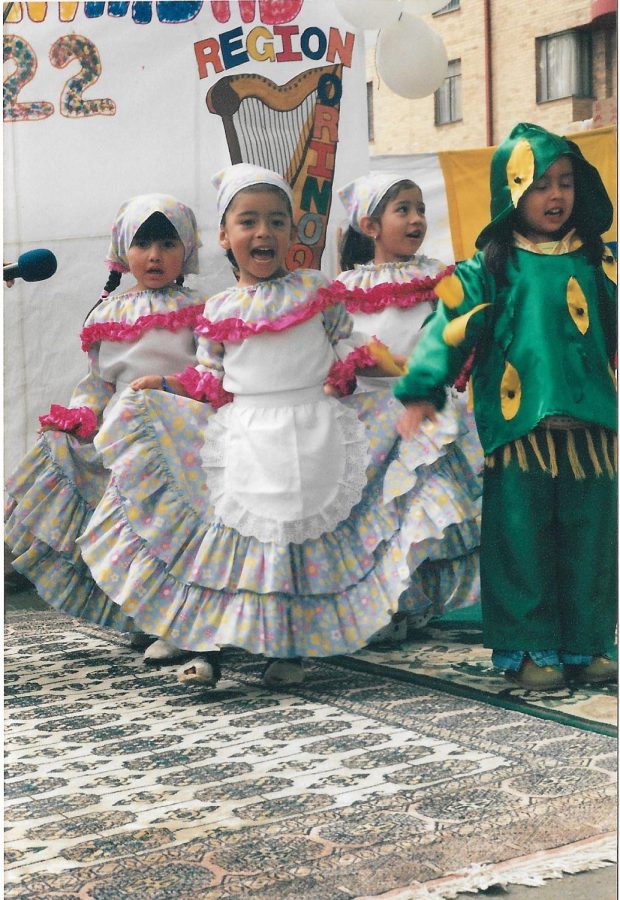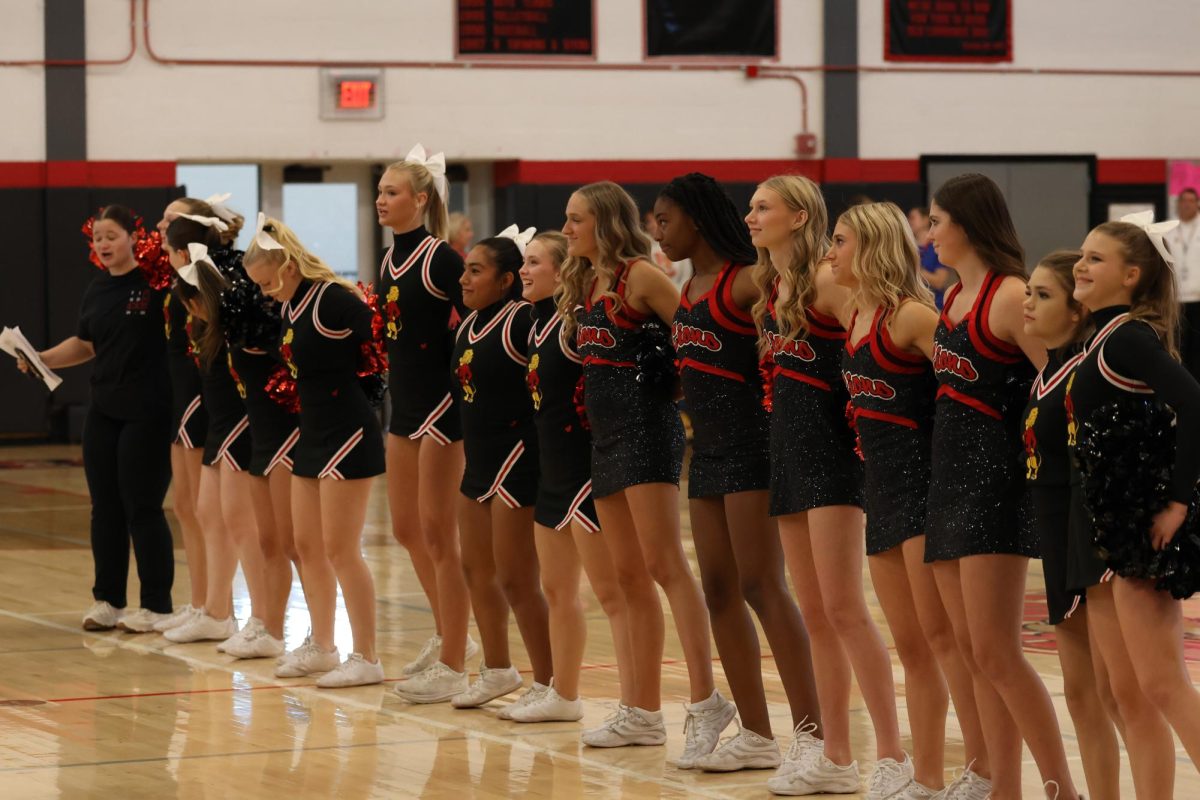Feeling seen in ‘Encanto’
Disney movie perfectly encapsulates student’s Columbian culture
March 30, 2022
As I sat in the movie theater between my mom and dad awaiting the start of “Encanto, ‘’ I didn’t have high expectations.
I was excited to see a movie set in Colombia, my birthplace, but not prepared for the roller coaster of emotions I was about to experience.
The first line was in a dialect that I was quite familiar with, from a motherly figure whom I knew well. “Abre los ojos” — open your eyes — said Abuela Alma to little Mirabel as she sat on her grandmother’s lap, a woman who reminded me of my own.
From that point, it was impossible to stop the river of tears that escaped from my eyes. I felt a bit embarrassed because I have a reputation among my family for crying at the drop of a hat.
I saw Alma passing down her family’s history down to her youngest grandchild, delicately approaching the tough subject of her life, and I subconsciously began missing my own grandmother and the experiences I had with her and her stories. The opening music scene began with vallenato folclorico, music I had heard and grown up with during celebratory times in Colombia.
The tears continued until the end of the movie.
Many Latinos were shocked that “Encanto” was about Colombia. Although I found Disney’s efforts to represent diverse cultures refreshing, I kept expectations at bay. Disney could’ve been doing this for appearances, and they would likely butcher Colombian culture since it’s not recognizable.
But even if it was awful, my parents and I couldn’t pass up the chance to savor some of that sweet representation on the big screen.
The movie centers around the Madrigals, a magical Colombian family of 12 unique members who oversee the town Encanto. The main heroine of the movie is Mirabel, the only one in her family not blessed with a magical gift and a sweet 15-year-old who copes with her isolated individuality.
Encanto’s muse was without a doubt Colombian, and it depicted multiple aspects that represented my country. Located in a valley inspired by the very real Cocora Valley, the attention to detail of the film was sublime. The food, clothing, music, animals, diversity of the people, even the architecture of the town was akin to the small pueblos in Colombia.
Even the characters displayed aspects of Colombian culture. Julieta, Mirabel’s mom, healed with food, as a lot of mothers do, since food is made with love cures. Antonio, Maribel’s youngest cousin, could talk to animals and through him, native animals were depicted. Through Isabela, Maribel’s eldest sister, the audience saw the abundance of Colombian fauna.
Often in the media and Latinx culture, Afro-Latinos are erased because of rooted colorism. But ‘Encanto’ ignored this trope. Pepa’s husband, Felix, was Afro-Latino, with dark skin and textured hair and their kids were mixed.
Encanto also combats toxic masculinity and beauty standards that Latinx media has pushed onto its audience. Isabella, the pretty sister, had indigenous features, not Spanish ones: straight thick black hair, dark tan skin, and an elongated nose. Felix and Agustin, the two men that married into the Madrigal family, weren’t afraid to be secondary characters in the Madrigal matriarchy. The stress and responsibility of the family aren’t left to the women. Instead, Felix and Agustin take on some of the burdens themselves.
Encanto also ties in a painful but universal experience of Colombians in its plot. In the ‘60s, a civil war began in Colombia, which left millions displaced due to armed conflict caused by guerillas like FARC, the Colombian government, and paramilitary groups. Alma, Maribel’s grandmother, founded Encanto after she and her husband were forced out of their home, leading to the murder of Pedro, Alma’s husband. Refugees like Alma were left with intense trauma, and in Alma’s case, the trauma manifested into a fear of losing her new home and family.
Often media that includes the war focuses on the glamorized role drug cartels play in conflict and not the effect of the war itself. “Encanto” shows the emotional impact on the people and the resulting turmoil that’s passed down to Alma’s family because of her experience. Encanto depicts how not dealing with your own trauma can affect loved ones.
A lot of lore from Colombia was tied into the movie, like the importance of candles and butterflies. The power of the Madrigal family comes from a wax candle that arose from Alma’s grief and distress. Alma and Pedro’s first encounter is during dia de las velitas (day of candles), a holiday celebrated by Colombians on Dec. 7 in commemoration of when Jesus was conceived. This day marks the beginning of Christmas and involves the lighting of candles and paper lanterns. It’s celebrated as a community — a time to rejoice and be with loved ones. There are golden butterflies, a symbol of hope and peace in Colombia, everywhere.
Because of Nobel-winning Colombian author Gabriel Garcia Marquez’s book 100 Years of Solitude, golden butterflies became a symbol of renewal, love, and hope that we’ll someday be at peace. In Encanto, the butterflies appear after Mirabel and Alma’s relationship has healed and the family is at peace.
Encanto teaches about the importance of healing. The giftless Maribel is her family’s salvation because of her commitment to easing her family’s troubles. Maribel constantly has butterflies on her showing she’s the youthful antidote for the eldest generation.
Like Maribel, teenagers are now attempting to teach their parents and grandparents how their actions affect them, and how to healthily discipline without invalidating them. With willing and responsive adults, generational trauma will become less common.
Encanto represented my country. In that theater, I felt seen for too many reasons to count as Encanto emphasized the importance of family and familial ties for Latinos. This movie gave me and my parents a little sensation of what it’s like to be back in Colombia through the story of a wonderful family, paying homage to my beautiful country.














